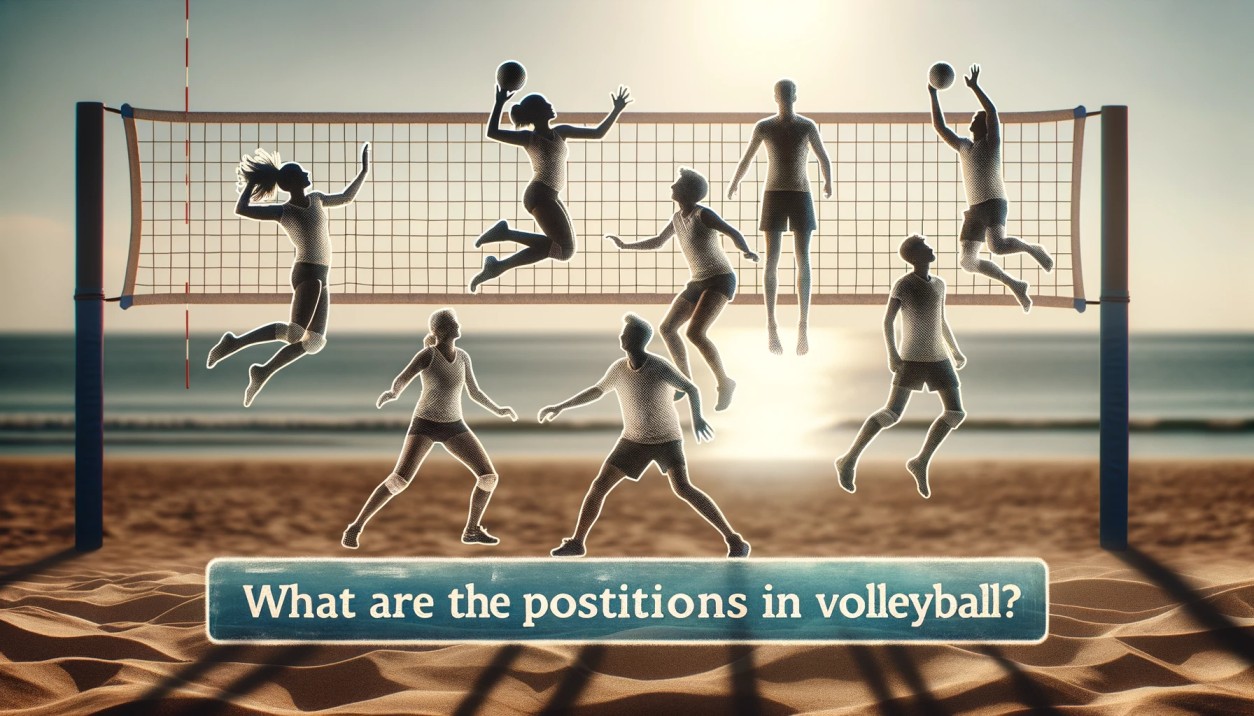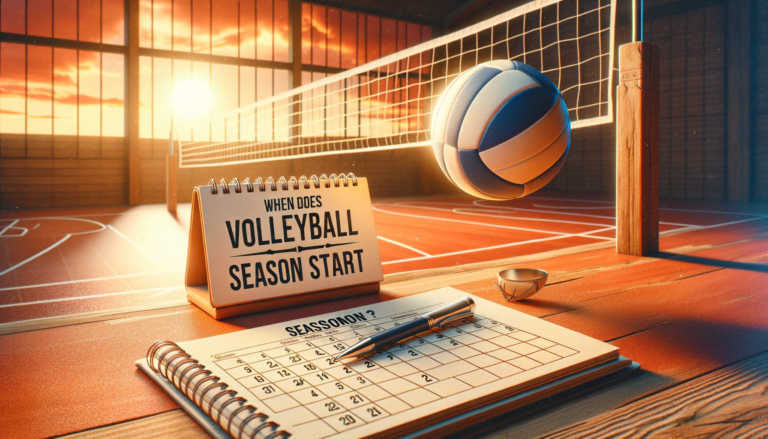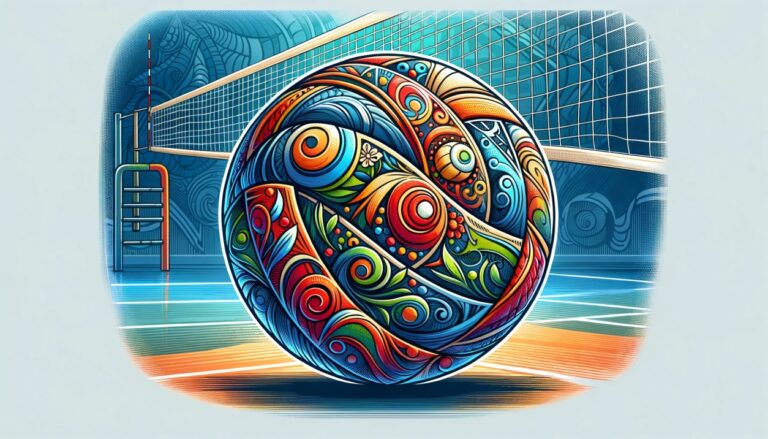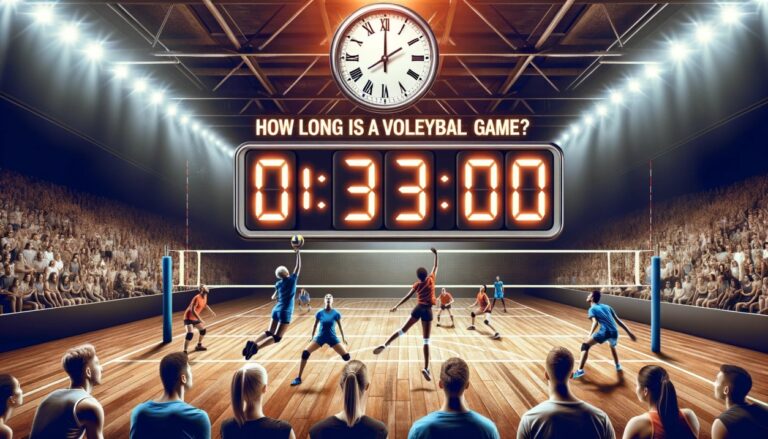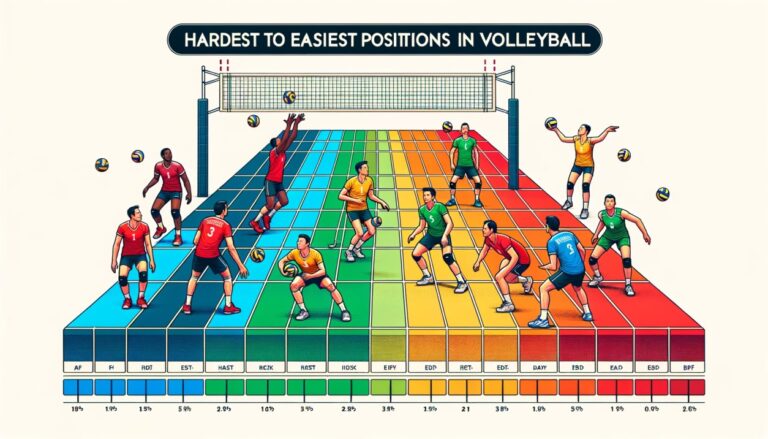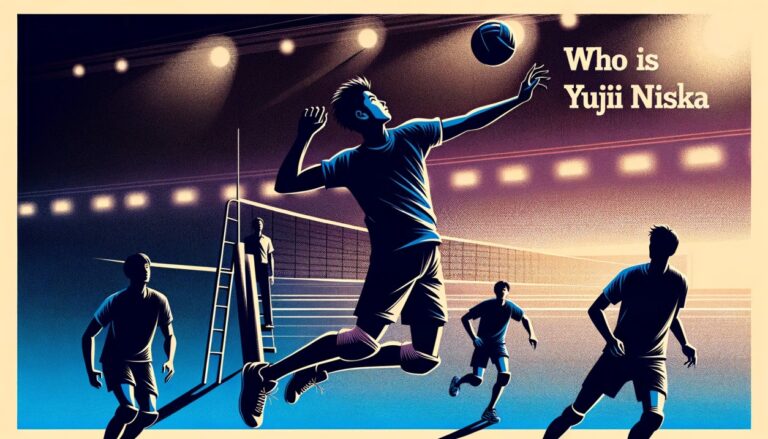Volleyball Positions: What Are The Positions In Volleyball
Introduction
In this article, we will talk about the volleyball positions because positions play crucial role in every game. In each position players have different roles and responsibility and knowing about each position responsibility is very important for you if you want to become player of this game. We will talk about each position and about the players of those position. In every field of life, you should know about the positions of that field so that you can easily recognize your position and struggle for the upper position same in the case of volleyball. We will discuss about the position of the volleyball.
Brief description about the position of volleyball
There are 5 basic positions in the volleyball i.e.; Outside Hitter Middle Blocker Opposite Hitter Setter Libero Defensive Specialist and each have its own responsibility related to the game. The reason of making different position in a game is that every person takes responsibility of his position and participate actively in a game like the responsibility of libero is to defend the game and if libero does not take his responsibility then it will be difficult for setter to give attention on double side so that’s why each player has its own position and in this way the leader of the team can easily judge the positions of the players and can lead them on their mistakes.
The Importance of Positions in Volleyball
- Teamwork and Strategy: Knowing your position well contributes to better team dynamics and strategic plays.
- Specialization of Skills: Each position requires a specific skill set, which allows players to specialize and excel.
The Six Basic Volleyball Positions
- Outside Hitter
- Middle Blocker
- Opposite Hitter
- Setter
- Libero
- Defensive Specialist
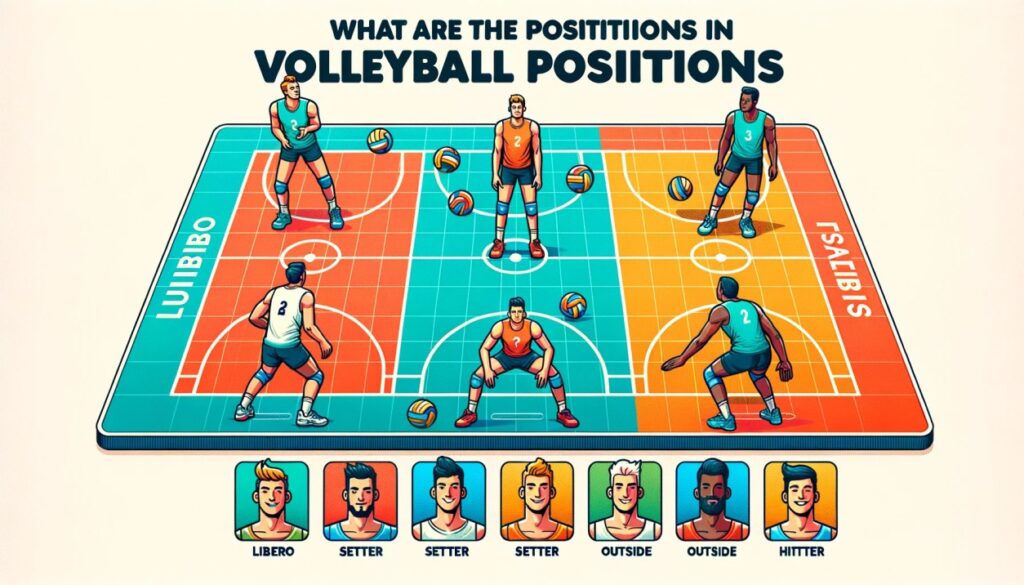
Outside Hitter
Role and Responsibilities: The outside hitter is often the team’s primary scorer, responsible for spiking the ball over the net. They also play a role in blocking and back-row defense.
Middle Blocker
The Great Big Dumb Middle Blocker
- Contrary to the stereotype, middle blockers need to be quick thinkers and have excellent timing.
Middles Are Blocking Specialists
- Primarily responsible for blocking both quick and high balls.
- Requires excellent timing and hand-eye coordination.
The Middle Hitter Attacks Swiftly
- Executes quick attacks to catch the defense off guard.
- Requires a strong connection with the setter.
Responsibilities & Attributes Of A Middle Blocker
- Excellent blocking skills
- Quick decision-making
- Strong attacking capabilities
- Good communication with the setter
Role and Responsibilities: The middle blocker is the team’s defensive anchor. They are responsible for blocking opponents’ attacks and are often involved in quick offensive plays.
Opposite Hitter
Opposite Hitters Don’t Really Have To Pass
- Opposite hitters are usually positioned in the back row and are not primarily responsible for passing.
- They can focus more on attacking and blocking.
Opposite Hitters Occasionally Assist With Setting
- When the setter is unable to make a play, the opposite hitter can step in to assist.
- This requires a good understanding of setting techniques and team dynamics.
Opposite Hitter: Back Row Spiking Specialist
- Specializes in back-row attacks.
- Requires strong spiking skills and the ability to hit from behind the 3-meter line.
Opposite Hitters Are Often Left Handed
- Being left-handed is an advantage for an opposite hitter as it allows for different angles and approaches to the net.
Opposites Are Proficient Blockers
- Often tasked with blocking the opponent’s outside hitters.
- Requires good timing and positioning.
Responsibilities & Attributes Of An Opposite Hitter
- Strong attacking skills
- Proficient in blocking
- Versatility in setting
- Good court awareness
Role and Responsibilities: The opposite hitter plays across from the setter and is responsible for blocking and attacking. They often handle the opponent’s toughest serves.
Setter
The Setter Is The Brains Of The Operation
In the game of volleyball, the setter is often considered the brains of the operation. Just like a quarterback in football or a point guard in basketball, the setter is responsible for running the team’s offense and making crucial decisions in real-time.
- Decision Making: The setter must quickly assess the situation and decide which player is best positioned to make a successful attack.
- Strategic Planning: They must understand the strengths and weaknesses of both their team and the opposition, and plan accordingly.
- Game Awareness: A good setter is always aware of the game’s tempo, the score, and the capabilities of each player on the court.
A Setter’s Job Is To Deliver The Goods
The primary job of a setter is to deliver the goods, meaning they are responsible for setting up the ball in such a way that their teammates can easily attack it.
- Ball Handling: The setter must be skilled in accurately placing the ball for the hitters.
- Timing: They must have impeccable timing to ensure that the ball is set at the exact moment the hitter is ready to attack.
- Versatility: A good setter can adapt to different play styles and is capable of making last-minute adjustments to throws and plays.
Setters Communicate Via Sign Language
Communication is key in volleyball, and setters often use a form of sign language to communicate with their teammates.
- Hand Signals: Before the serve, the setter uses hand signals to indicate which play will be executed.
- Non-Verbal Cues: During the play, setters use eye contact and body language to communicate with teammates.
- Adaptability: The ability to quickly change signals and adapt to the flow of the game is crucial for a setter.
Responsibilities & Attributes Of A Setter
Being a setter is not just about physical skill; it also requires a certain set of responsibilities and attributes.
Responsibilities
- Serve Setting: Initiating the play by delivering a well-timed and well-placed serve.
- Ball Distribution: Deciding who gets the ball and when, based on the game situation.
- Defensive Plays: Although not their primary role, setters are also expected to contribute to defensive plays when needed.
Attributes
- Leadership: A setter must be a leader on the court, capable of motivating teammates and maintaining team morale.
- Mental Toughness: The ability to stay focused and make good decisions under pressure is crucial.
- Technical Skill: A high level of skill in ball-handling, timing, and positioning is essential for a setter.
Role and Responsibilities: The setter is the playmaker. They set up the ball for attackers and are crucial for initiating offensive plays.
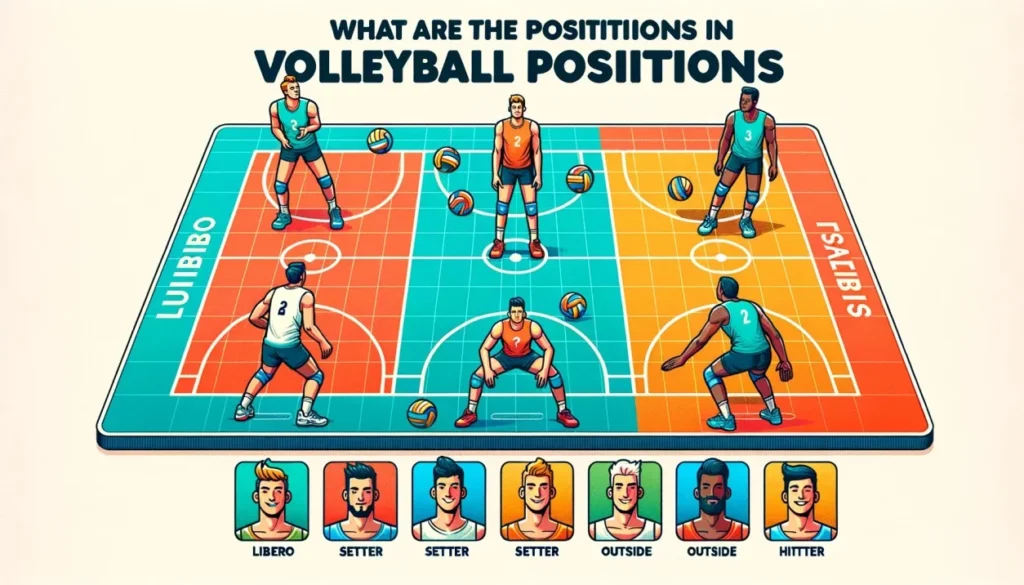
Libero
Liberos Are Technicians
- Specialize in defensive skills like digging and passing.
- Requires excellent technical skills and footwork.
The Shortest Position In Volleyball: Libero
- Often the shortest player on the team but what they lack in height, they make up for in agility and speed.
The Libero Wears A Different Colored Jersey
- To easily identify them, liberos wear a different colored jersey.
Responsibilities & Attributes Of A Libero
- Excellent passing and digging
- Quick reflexes
- Good court awareness
- Strong communication skills
Role and Responsibilities: The libero is the defensive specialist who excels in digs and passes. They cannot attack or block but are key in setting up defensive plays.
Defensive Specialist
The Defensive Specialist Assists In High Pressure Situations
- Comes in during crucial moments to provide defensive support.
- Requires strong defensive skills and the ability to handle pressure.
Responsibilities & Attributes Of A Defensive Specialist
- Strong defensive skills
- Ability to handle high-pressure situations
- Good court awareness
Role and Responsibilities: Similar to the libero but with fewer restrictions. They are versatile players who can serve, dig, and sometimes attack.
The Rare 7th Position: Serving Specialist
The Perfect Situation For A Serving Specialist
- Comes in specifically to serve and usually subs out immediately after.
- Requires excellent serving skills.
Serving Specialists Aren’t Really A Thing…
- While not officially recognized, some teams use a serving specialist for strategic advantages.
Responsibilities & Attributes Of A Serving Specialist
- Excellent serving skills
- Ability to handle pressure
- Limited court time but high impact
Advanced Positions and Rotations
- Double Substitution: A strategy to keep strong front-row and back-row players in the game.
- 6-2 and 5-1 Rotations: The 6-2 rotation involves two setters, while the 5-1 rotation involves one. These rotations affect the team’s offensive and defensive capabilities.
How to Excel in Each Position
Tips and Techniques
- Consistent practice
- Watching and learning from professionals
- Team drills
Training Regimen
- Cardio workouts for stamina
- Strength training for power
- Skill-specific drills
Tips for Outside Hitters
- Quick Pointers:
- Focus on your approach and arm swing.
- Work on your timing for jumps.
- Master cross-court and line shots.
Tips for Middle Blockers
- Quick Pointers:
- Work on your blocking technique.
- Improve your lateral speed.
- Master quick sets for surprise attacks.
Tips for Opposite Hitters
- Quick Pointers:
- Work on your serve receive.
- Improve your blocking skills.
- Develop a strong back-row attack.
Tips for Setters
- Quick Pointers:
- Master different types of sets.
- Work on your hand positioning.
- Develop a good sense of court awareness.
Tips for Liberos
- Quick Pointers:
- Improve your digging skills.
- Master the art of the overhand pass.
- Work on your serve receive.
FAQs
What is the most important position in volleyball?
There’s no definitive answer as each position has its unique importance. However, many consider the setter to be the quarterback of the team.
How do you rotate positions in volleyball?
Players rotate clockwise after winning a point when the opposing team served.
Can you switch positions in volleyball?
Yes, but only under specific rules and usually after a point has been scored.
What is each position in volleyball?
Middle Blocker: The defensive anchor of the team, responsible for blocking opponents’ attacks and often involved in quick offensive plays.
Outside Hitter: Primarily responsible for spiking the ball over the net and also plays a role in blocking and back-row defense.
Opposite Hitter: Plays across from the setter and is responsible for blocking and attacking, often handling the opponent’s toughest serves.
Setter: The playmaker of the team, setting up the ball for attackers and initiating offensive plays.
Libero: A defensive specialist who excels in digs and passes but cannot attack or block.
Defensive Specialist: Similar to the libero but with fewer restrictions, versatile in serving,
What is position 6 in volleyball?
Position 6 in volleyball is the back-middle position, usually occupied by the libero or a strong defensive player. This position is crucial for serve-receive and defensive plays.
What’s the definition of a libero?
A libero is a defensive specialist in volleyball who excels in digs and passes. They are restricted from attacking the ball above the net and cannot block or serve in some variations of the game.
What does 2 and 4 mean in volleyball?
Positions 2 and 4 in volleyball refer to the front-row positions on the right and left sides, respectively. Position 2 is usually occupied by the setter, and position 4 is often where the outside hitter is located.
What is the L in volleyball?
The “L” in volleyball usually refers to the libero, the defensive specialist who is exceptional at digging and passing.
What is position 1 in volleyball?
Position 1 in volleyball is the back-right position, often occupied by the server or a strong defensive player other than the libero.
Is libero a hitter?
No, the libero is not a hitter. They are restricted from attacking the ball above the net.
Can libero serve the ball?
In some variations of the game, such as NCAA women’s volleyball, the libero is allowed to serve the ball. However, this may not be the case in all leagues or levels of play.
Can a libero spike?
No, a libero cannot spike or attack the ball above the net.
What is J in volleyball?
The term “J” in volleyball is not standard and could be a team-specific code or slang. It’s not universally recognized in the sport.
What is a 6-2 in volleyball?
A 6-2 in volleyball refers to a rotation system involving six hitters and two setters. When one setter is in the front row, the other is in the back row, allowing for a more versatile offense.
What is a 5-1 in volleyball?
A 5-1 in volleyball refers to a rotation system involving five hitters and one setter. The setter sets for all six rotations, making them a crucial part of both the offensive and defensive plays
Conclusion
we had discussed about the volleyball position and its importance in the game that every player has his own position and responsibility regarding to this position so if you want to become the player of volleyball then you should must know about the rules, strategies, position and responsibilities and once you learn about each and everything about your position then you will become champion of the game. So for getting success in any field of life you must have a strong grip on your position.
